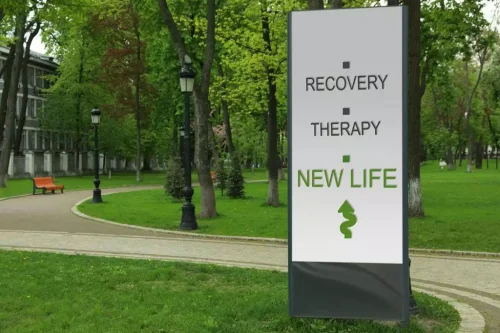
As shown in the Table 4, the results indicate that the HTMT values between each pair of variables in this study are below 0.85, indicating good discriminant validity for each variable. The discriminant validity analysis is to verify whether there is a statistical difference between two different constructs. The items in different constructs should not be highly correlated, and if they are (0.85 or higher), it means that these items are measuring the same thing, which often happens when the definitions of the constructs overlap excessively. The diagonal is the square root of each factor’s AVE, greater than the standardized correlation coefficients outside the diagonal. This study has discriminant validity, and the lower triangle is the correlation coefficient. She is also the the Co-Host of the popular Elevate Experience Podcast, a no-holds-barred look at addiction and the power of effective treatment.
Environmental manipulation and behavioural counseling
Cognitive dissonance reduction is a major factor in shaping the human psychological experience. When Governor Smith was faced with the data about the election, she was immediately forced into a state of cognitive dissonance. Internal consistency reliability is a statistical method used to measure the consistency and reliability of tests or actual measurements in the research.
Emotional Development in Childhood: 3 Theories Explained

Perhaps one of the most basic features of the human psychological condition pertains to a strong tendency to reduce cognitive dissonance (see Festinger & Carlsmith, 1959). The basic idea here pertains largely to the fact that we often (see Ross & Nisbett, 1991), unwittingly, mistake social reality (such as our attitudes about people or politics) with physical reality (such as the fact that water turns to ice below cognitive dissonance and addiction 32 degrees Fahrenheit). For instance, people often seem to think that their political views on some issue (e.g., state funding for higher education) are somehow “correct” just as much as their perception that an iceberg floating down a river in February formed in low winter temperatures. Cognitive dissonance is the uncomfortable feeling that can occur when you have conflicting beliefs, values, or behaviors.
Effects of cognitive dissonance
The observed enhancements might have reflected the reversal of withdrawal effects, rather than improvements over their normal cognitive powers. A subsequent review of the literature, however, suggests that acute nicotine enhances reaction time and attention in nicotine-naïve individuals (Swan and Lessov-Schlaggar, 2007). Cocaine produced similar effects in a study of rats that were treated with the drug and then exposed to a sensory stimulus; the animals exhibited enhanced neural activation when later re-exposed to the stimulus (Devonshire, Mayhew, and Overton, 2007). Mindfulness based interventions or third wave therapies have shown promise in addressing specific aspects of addictive behaviours such as craving, negative affect, impulsivity, distress tolerance. These interventions integrate both cognitive behavioural and mindfulness based strategies. The greatest strength of cognitive behavioural programmes is that they are individualized, and have a wide applicability.
Conversely, users with low self-efficacy are more prone to discontinuous usage intention, potentially leading them to uninstall the platform. Recent literature supports the study’s findings on cognitive and affective dimensions in user behaviour. Zhang, Zhao, Lu, and Yang [79] research showed that information overload and service overload could lead to cognitive dissonance and negative emotions, resulting in discontinuous usage intention. Marikyan, Papagiannidis, and Alamanos [83] discovered a positive correlation between user addiction and cognitive dissonance, leading to discontinuous usage intention. The current body of literature indicates a growing trend of discontinuous usage intentions among users of social media platforms.

A Note on Cognitive Dissonance in Relationships
Cognitive dissonance is the fundamental coping mechanism that people abusing drugs use throughout their active addiction and can often follow them into recovery. Only when they are ready can they possibly have a chance to see the https://ecosoberhouse.com/article/alcoholism-statistics-you-need-to-know/ cognitive dissonance for what it is and the damage their addiction has caused. The defense mechanisms that someone places around themselves to keep cognitive dissonance at bay need to be addressed to start the recovery process.
- A reward system was implemented to incentivize the participants further to provide honest and thoughtful responses.
- Even if you are not struggling with depression, anxiety, or another serious mental health issue, it doesn’t hurt to evaluate your own thoughts every now and then.
- Gradually he began to drink before meetings or interactions (maladaptive coping and negative reinforcement).
- This might involve going along with something due to peer pressure or doing something at work to avoid getting fired.
Cognitive dissonance can often have a powerful influence on our behaviors and actions. It doesn’t just influence how you feel; it also motivates you to take action to reduce feelings of discomfort. The theory of cognitive dissonance proposes that people are averse to inconsistencies within their own minds. It offers one explanation for why people sometimes make an effort to adjust their thinking when their own thoughts, words, or behaviors seem to clash with each other. Prenatal exposures to a number of other drugs have significant deleterious effects on cognition and behavior that may not rise to the level of mental retardation. In one study, 5-year-olds whose mothers had used alcohol, cocaine, and/or opiates while pregnant ranked below unexposed controls in language skills, impulse control, and visual attention.
DRUGS OF ABUSE AND MENTAL ILLNESS
- Third, the role of self-efficacy has been widely studied in the field of psychology, particularly in the areas of motivation, achievement, and mental health.
- Cognitive dissonance produces three disordered emotions, including the positive (pleasure), the negative (antipathy, self-accusation), and psychological discomfort (irritability, discomfort), and people usually change their attitudes or behavior to achieve cognitive consistency.
- If a voluntary experience that has cost a lot of effort turns out badly, the dissonance is reduced by redefining the experience as interesting.
- CBT comprises of heterogeneous treatment components that allow the therapist to use this approach across a variety of addictive behaviours, including behavioural addictions.
- They further presupposed that participants would be driven to reduce the dissonance by justifying their behavior.
- In this way, he would be decreasing the importance of dissonant cognition (smoking is bad for one’s health).
We want to give recovering addicts the tools to return to the outside world completely substance-free and successful. These sneaky, inaccurate patterns of thinking and believing are common, but their potential impact should not be underestimated. While there are clearly many honors, awards, and achievements Beck may be known for, perhaps his greatest contribution to the field of psychology is his role in the development of cognitive therapy.
- Conversely, users with low self-efficacy are more prone to discontinuous usage intention, potentially leading them to uninstall the platform.
- Others high risk situations include physical states such as hunger, thirst, fatigue, testing personal control, responsivity to substance cues (craving).
- Since cognitive dissonance often naturally occurs after a decision such as a purchase, this is what questionnaires have focused on.
- The emotional experience of cognitive dissonance is marked by an unsettling sense of internal conflict.
- The RP model highlights the significance of covert antecedents such as lifestyle patterns craving in relapse.
